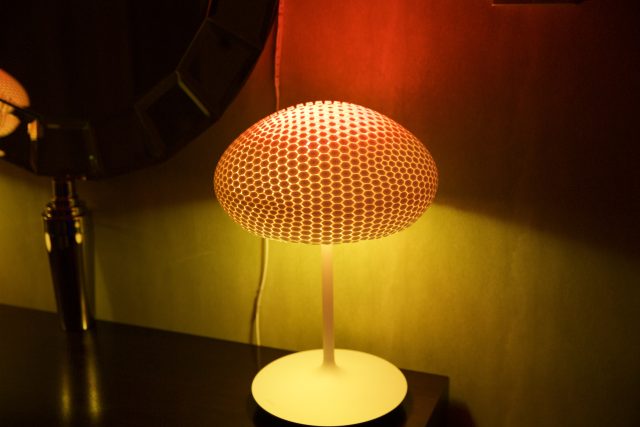
We’ve written pretty extensively in the past about Philips’ multicolored Wi-Fi/Zigbee Light Link Hue LED bulbs, including most recently posting a chat with the lead designer of the Philips Hue system, George Yianni. The Hue system recently had its second birthday, and now that it’s had the opportunity to grow and mature a bit, Philips recognizes that it’s time to focus firmly on the future of the ecosystem and how to make Hue lights into actual lifestyle-type products that people want to use instead of just “fancy expensive lights that change colors.”
Samsung’s weirdly uncomfortable CES 2015 keynote focused on the kinds of emergent cool things that can happen when you connect “smart” devices to other “smart” devices, and one of the device-producing companies Samsung called out by name in that keynote was Philips. Hue lights already have an open API that owners can use to interact programmatically, but both Yianni and Philips Senior Global Director of Connected Lighting Filip Jan Depauw emphasized that making Hue work with as many other systems as possible is a high priority.
“We’re really focused on trying to be the lighting experts inside smart homes and work with all of the other companies who are doing interesting things inside the home with connected products,” explained Yianni. To that end, Hue can interoperate with hub products like the SmartThings system and can be made to respond to inputs from a wide variety of well-known devices like Nest Thermostats and home security systems.
-
Playing Minecraft with Philips Hue integration provided by a mod. I want this.Lee Hutchinson
-
Chariot, another game with Hue integration.Lee Hutchinson
-
A sampling of some of the other smart devices Philips Hue can interact with.Lee Hutchinson
-
A 3D-printed lamp by Strand + Hvass made up of about 3,000 sticks, with a custom Hue element inide.Lee Hutchinson
Yianni also showed off some neat media integration—the Hue tie-ins with Sharknado and 12 Monkeys are neat, but more interesting to us was Hue integration with games like Minecraft, which took the form of an in-game mod that changed the room’s Hue lights’ colors to mirror the game’s environment. Planting a torch on a cave wall caused the lights to flip on; diving underwater cast the room in a dark blue glow; dying led to red flashes as the player’s heath meter bottomed out.
In addition to out-of-ecosystem expansion, Yianni and Jan Depauw also showed off some directions in which the Hue system could be expanded. We got to see Philips-branded sensors that would trigger lights when doors opened or when you enter a room. Yianni explained that the benefit in doing this kind of live presence-based light triggering locally with Hue’s onw sensors rather than relying on a data fed from third-party sensors (which potentially might communicate over the Internet instead of a local wireless network) is latency—a half-second delay when you open a door or flip a light switch before the light actually responds would be pretty disconcerting.
Because Philips is currently in a quiet period prior to its quarterly financial results, we weren’t able to talk about any specifics regarding actual new Hue lights; however, we did get a promise from the Hue folks that as soon as there’s anything to share, we’ll be among the first to know.
reader comments
56